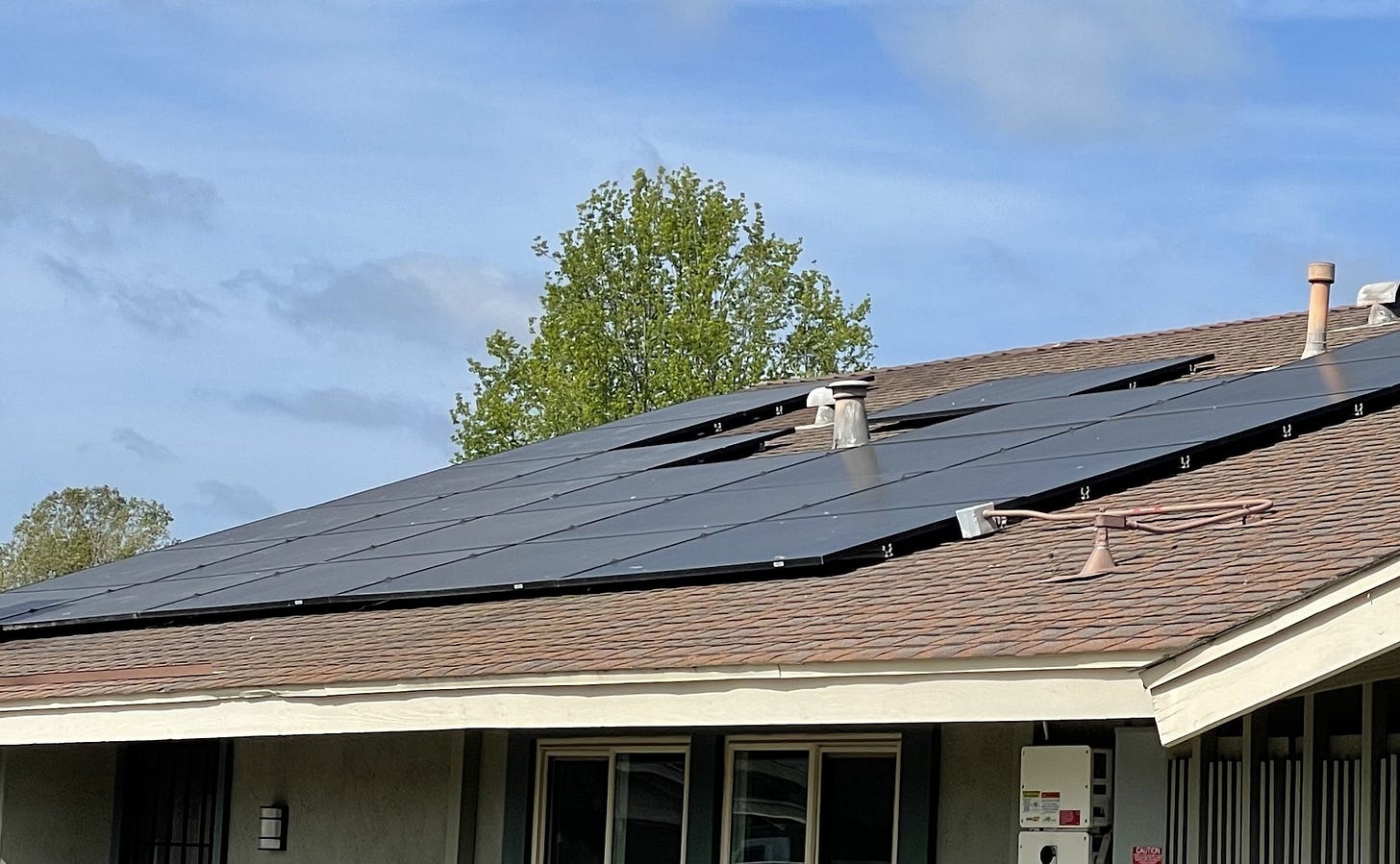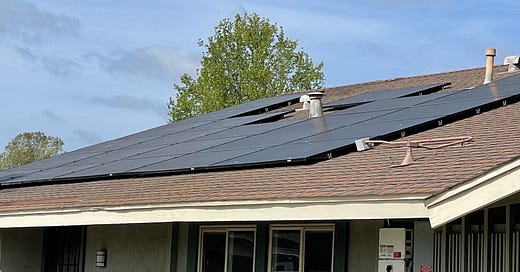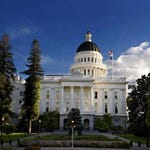
STATE — A new proposal has fired up owners of rooftop solar and the solar industry to level the playing field.
Assembly Bill 942 from Lisa Calderon (D-Whittier) would rewrite the Net Energy Metering programs, end “godfathering” for NEM 1.0 and 2.0 customers, and eliminate solar credit exports to help lower the cost burden on non-solar customers. The bill has sparked fury from rooftop solar customers and the solar industry. The Solar Rights Alliance organized a protest at Calderon’s office in the City of Industry on Wednesday, according to the Los Angeles Times, with dozens of residents and the California Solar & Storage Association also in attendance.
Many have ripped Calderon’s bill for being utility-friendly, noting she was the former government affairs manager for Southern California Edison, managed the company’s political action committee, and worked there for 25 years, per her LinkedIn profile.
However, supporters of the bill, along with Calderon, say the bill also addresses the $8.4 billion cost shift, delivers a fairer system to all ratepayers and will help reduce rates. As for the cost shift, the money “shifts” from utility to solar companies for their monthly payments, which negatively impacts various utility operations such as wildfire prevention, low-income programs, energy efficiency initiatives, and subsidizes NEM customers and more.
“From an equity standpoint, that’s not fair,” Calderon told The Times. “I would love for everyone to have solar, but we need to do it in a fair and equitable way.”
The bill would also limit credits from 20 years to 10 years. Many customers and groups like the Sierra Club are furious as the state has said those contracts would be honored for 20 years.
Calderon said 97% of residents in her district are paying higher electricity bills because of the solar credits due to the credits going to the other 3% who send unused electricity to the grid.
North County Pipeline left a request for comment with Calderon’s office, but she, nor did her office, respond by deadline.
Customers under the Net Billing Tariff program (NEM 3.0), which was enacted in 2024, are credited for the avoided cost from exported energy. The California Public Utility Commission’s approval of the NBT also caused outrage among solar companies, advocates and customers.

The current NBT ties compensation for solar exports to values determined by the Avoided Cost Calculator (ACC) established by the commission. The ACC’s intention is to base compensation for solar customers on actual grid benefits, rather than retail rates, similar to some municipal utilities compensate solar, according to SDG&E.
Currently, those in the NEM 1.0 or 2.0 programs are paid a retail rate of between 25 cents to 30 cents per kilowatt per hour by utility companies to send their unused electricity to the grid. For years, some customer advocacy groups have said customers should be paid a wholesale rate, if at all, as those expenditures result in higher rates and less investment into operations and maintenance.
In addition, utility spending on transmission and distribution infrastructure has increased by 300% over the past decade, per reports. However, the percentage spent on solar transmission and distribution was not reported, although it is included.
According to experts and reports, the rising cost of infrastructure is due to the energy transition and includes wildfire mitigation, grid modernization, renewable energy transition, NEM, solar costs and many other elements.
SCE estimates their customers will save $500 million by 2030 if the bill passes, or roughly 3% of their current bill, The Times reported. The newspaper also reported the bill has the support of San Diego Gas & Electric, Pacific Gas & Electric and the California State Association of Electrical Workers union, which told The Times the bill would “alleviate the financial burden on non-solar ratepayers.”
“It is unjust, unreasonable and unsustainable for Californians to continue shoveling billions of dollars every year to an industry when it is no longer justified nor fair to non-solar customers, particularly when the burden falls hardest on low-income customers,” Scott Wetch, a lobbyist for the electrical workers, wrote to the Assembly Utilities and Energy Committee.
While solar and wind now account for 25.7% of the state’s energy mix, experts say they’re a reason why rates have grown 3.5 times faster than the rest of the country. The average rate in California is 31.9 cents per kilowatt-hour, while SDG&E customers pay 68 cents per kWh.
SDG&E, meanwhile, also sent a two-page letter to the committee in support of Calderon’s bill. The company believes the legislation is critical reform stating legacy customers are overcompensated, which puts a larger financial burden on renters and low-income households.
According to SDG&E, the annual cost shift in its service area is about $1.3 billion per year, which amounts to $35 per month or $420 per year to the average non-solar customer. Additionally, SDG&E said NEM 1.0 and 2.0 customers receive overlapping financial benefits by receiving retail rates for exported electricity and public-funded rebates from the state’s climate credit ($160 per year), which are subsidized by non-NEM customers.
“As noted by the California Public Advocates Office, the California Public Utilities Commission (Commission), and the Legislative Analyst’s Office, NEM is one of the drivers of higher rates in California,” Israel Salas, SDG&E’s government affairs manager, wrote to the committee. “AB 942 will allow utilities to more quickly transition solar customers to modern tariffs, helping to mitigate the cost shift created by NEM programs, which will reach $8.5 billion this year.
“This bill will help to reduce the burden on non-solar customers while ensuring solar customers continue to receive benefits through cost-reflective tariffs, such as the current Net Billing Tariff that help reduce unsustainable subsidies for solar customers.”
Since 2008, when former Gov. Arnold Schwarzenegger signed an executive order requiring utilities to get one-third of the power they sell from renewable sources, prices have increased by an average of 18.1 cents per kWh, according to reporter Robert Bryce. The cost of all sector electricity has increased by 116% since 2008, according to the Energy Information Administration.
Regardless, other components of the bill include eliminating NEM legacy rates and solar customers must pay a non-bypassable charge like non-solar customers. In addition, the bill also includes transfer restrictions on home sales, meaning a new owner can’t inherit the NEM 1.0 or 2.0 contract. Instead, they must enroll in the current net billing tariff, pay all non-bypassable charges and will not be eligible for glide path (solar) credits.
As for the CPUC, it would be directed to create new tariffs for legacy customers of 10 or more years and new property owners with existing systems. Finally, on Jan. 1, 2026, solar customers will no longer receive the cap-and-trade greenhouse gas credit.
According to Calderon, the tariffs must lower the cost burden on non-solar customers.
The bill is with the Assembly Committee on Utilities and Energy. Two of the committee’s members are Tasha Boerner (D-Encinitas) and Laurie Davies (R-Laguna Niguel), who represent the coast from South Orange County to Oceanside (Davies) and from Carlsbad to Coronado (Boerner).
Follow North County Pipeline on Instagram, Facebook, X and Reddit. Send story ideas and tips to ncpipeline760@gmail.com.














Share this post